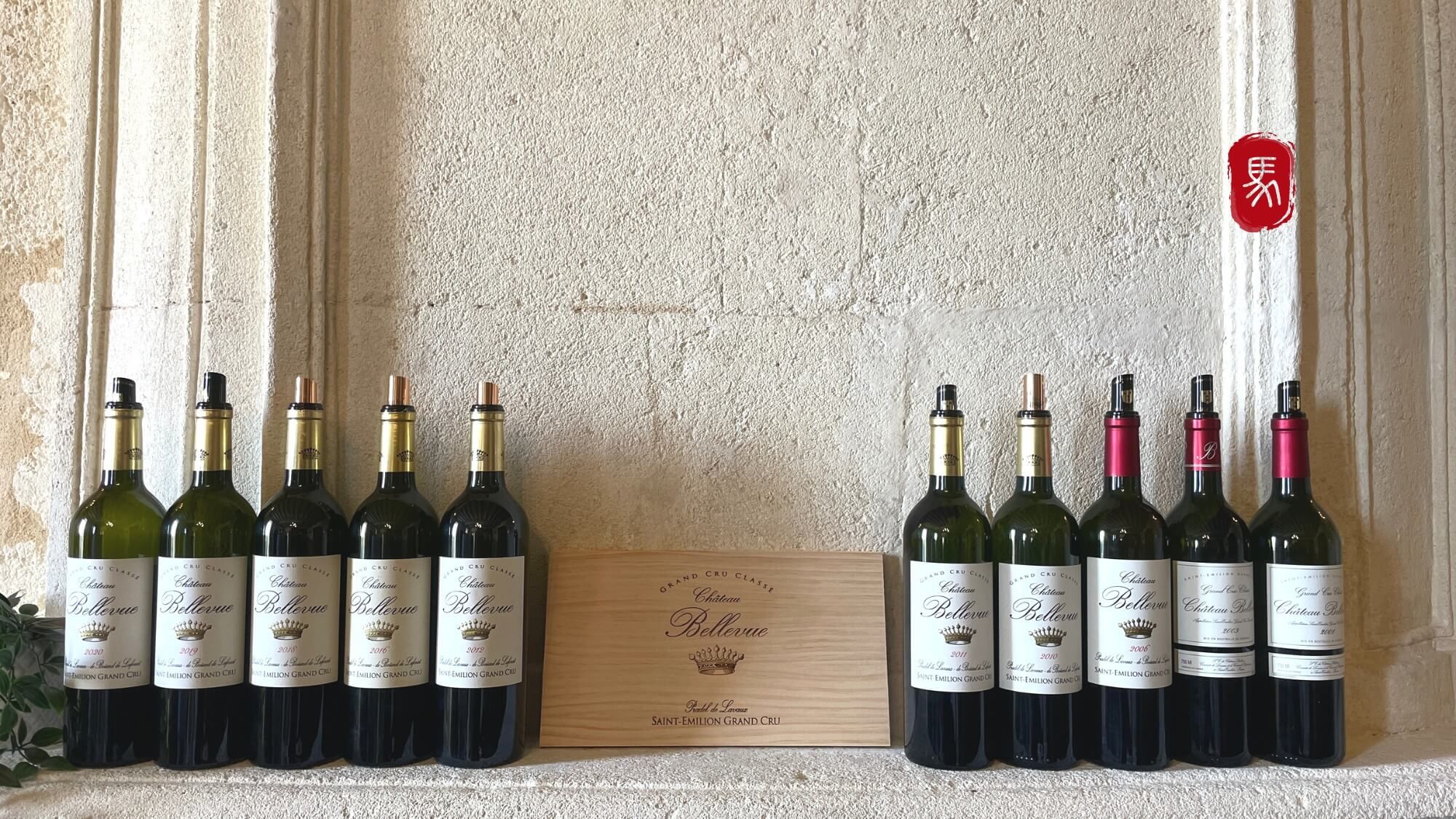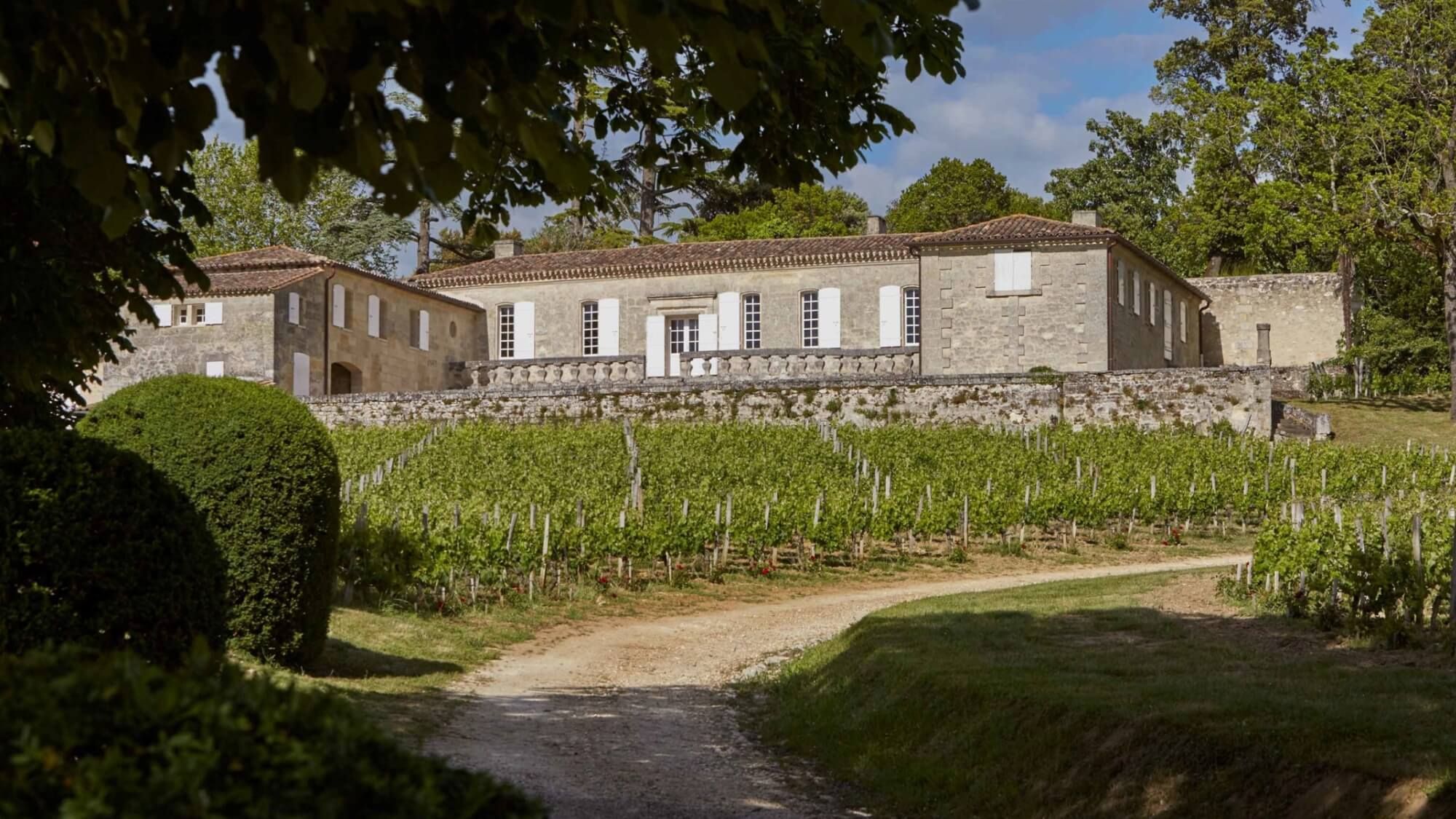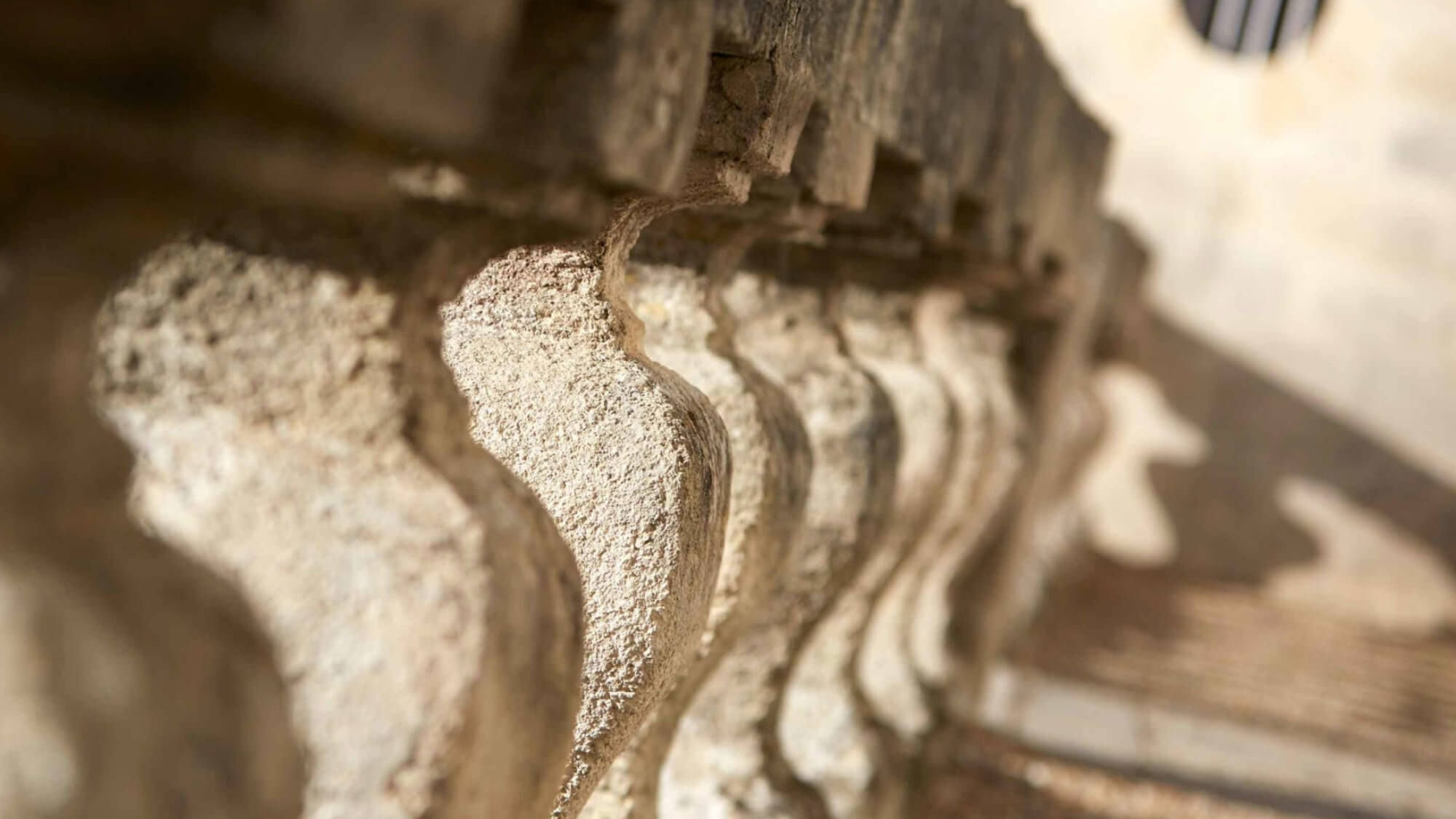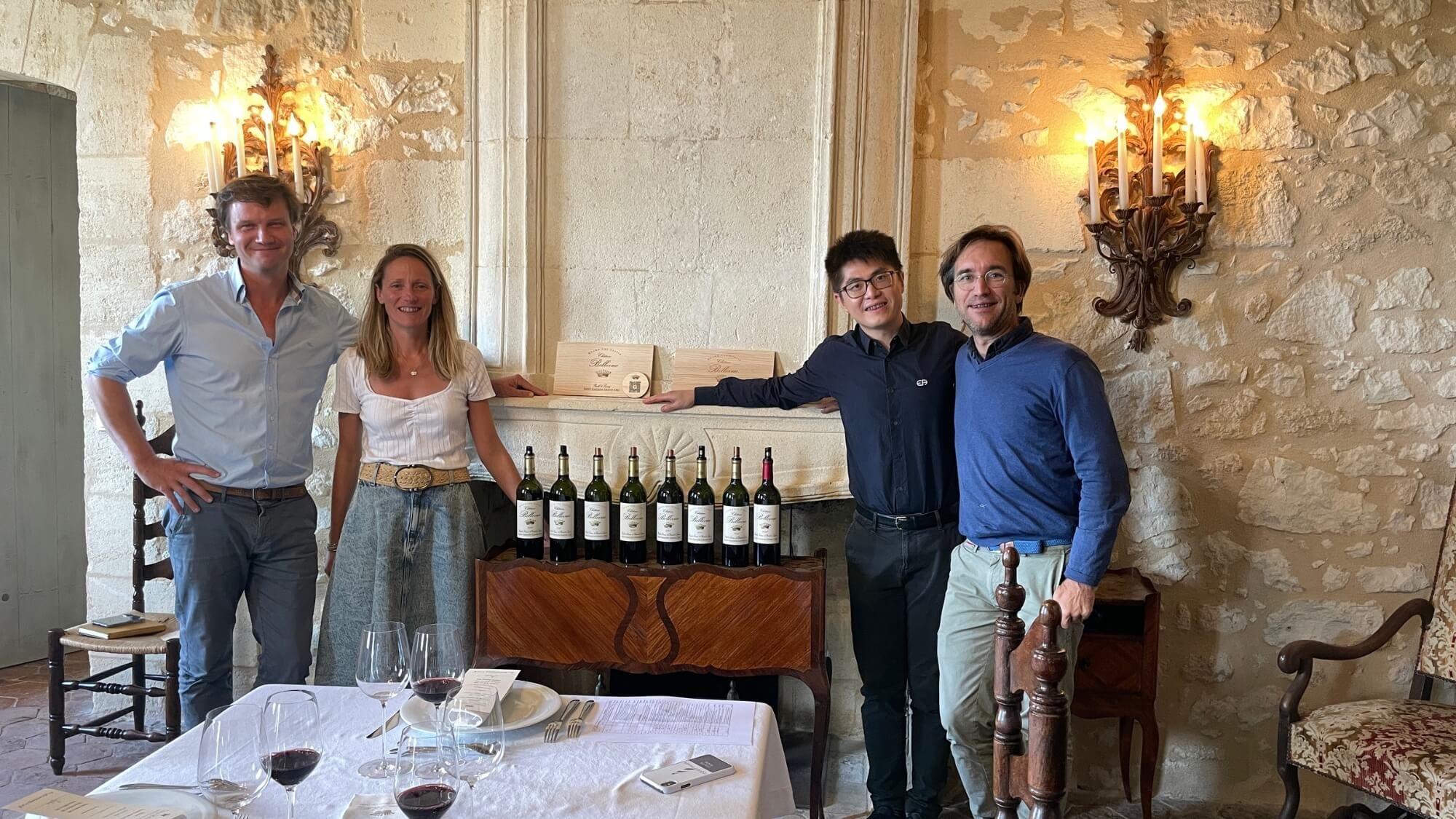AMA Vertical Tasting
Château Bellevue

Bordeaux has numerous Châteaux named “Bellevue,” but there is only one has the TOP terroir, that’s Château Bellevue, on the top of limestone plateau in Saint-Émilion.
At the end of 2022, Château Bellevue underwent significant changes, and I immediately noticed its style changing during En Primeurs tasting. When I visited it for the harvest this year, I had the opportunity to taste several newly made base wines.
To my surprise, the fruit aromas were remarkably clean and vibrant, as if a mix of fruity and floral scents singing together. I went back to Château Bellevue to learn more about these changes. I tasted their wines from 2001 to 2023 and learned a lot about this renaissance journey.
Now, I want to share my discoveries and the fun stories from my visit with you. I hope that after reading this, you’ll want to discover more about Bordeaux’s hidden gem.

I’ll start with a bold guess: I think Château Bellevue might become one of the 1er Grand Cru Classé B in Saint-Émilion’s next rankings. (Just to be clear, my guess is only based on the Terroir and quality.)
I have two reasons for this guess.
First of all, Château Bellevue in Saint-Émilion has the top Terroir for viticulture. Its 3.1-hectare vineyard is located on a limestone hill, starting from a small greenland at the top and stretching to the south and west. Vineyards near the top of the hill at Château Bellevue are dominated by hard limestone soil. This makes the grapevines grow deep roots. The wines from here have a unique taste, similar to chalk powder, and with a slightly salty aftertaste and multi-dimension on the palate.
An interesting thing is that water from the limestone flows downward, as seen in a small drainage path by the road. For Bordeaux, which has frequently experienced droughts in recent summers, this characteristic becomes particularly important that I believe deserves significant attention. As you move further down the slope toward the south and west, the proportion of clay and fine sand increases (though limestone remains dominant). Grapes originating from this area exhibit a rounder and full-bodied mouthfeel, often accompanied by riper fruity notes.

Now, let me start with the story I heard on this visit, you’ll understand why this is the second reason for my bold guess.
Château Bellevue originally was a charterhouse called “Fief de Bellevue,” constructed by the Lacaze family in 1642. Over the next 400 years, as France transitioned from the Bourbon monarchy to the French Revolution, and from the French Empire to the French Republic, the Lacaze family remained right there on this hill, making them one of the oldest families on the right bank.
In 1938, Mr. Jean Lacaze’s cousin, Louis Horeau, took over the estate. After his passing, his son-in-law Jacques Pradel de Lavaux and René de Coninck joined forces to run the family estate, with each holding 50% ownership.
The turning point occurred in 2007. In that year, descendants of the Coninck family decided to discontinue their involvement in the wine industry. They sold their 50% shareholding to the famous neighbor, Château Angélus. It’s worth mentioning that before the arrival of Château Angélus, Château Bellevue was managed by Nicolas Thienpont from 2000 to 2007, with assistance from his good friend, the world-renowned winemaking consultant Stéphane Derenoncourt.

For the next 15 years after 2007, Château Bellevue was made by Hubert de Boüard, the owner of Château Angélus, but this history came to a close as Château Angélus withdrew from the Saint-Émilion’s classification in 2022.
Then the co-owners, the De Lavaux family and De Boüard family decided to part ways. The roughly 3 hectares of vineyards to the south were taken over by the De Boüard family and subsequently incorporated into Château Angélus. Meanwhile, the 3.1 hectares of vineyards to the west and south, along with the cellar, remained under the name of the De Lavaux family.
At the end of 2022, Axel de Lavaux, the young successor of the De Lavaux family, took charge of the estate. That year, the Château Angélus team looked after the grapes, while Axel’s team handled the winemaking. Wanting to highlight Château Bellevue’s unique land, Axel brought in Frédéric Massie from the Derenoncourt team as their wine consultant.
This move shifted the wine’s style in 2022. Surprisingly, 20 years later, Château Bellevue went back to its authentic winemaking again.

I previously said that the new Château Bellevue wine has a purely clear aroma. When you taste it, it’s like experiencing fresh fruits and violets dancing on your taste buds. This feature will be even more evident after the vintage of 2023. If you’re curious about Château Bellevue’s future taste, I strongly suggest you trying this vintage next year.
During the era of the De Boüard family (2007-2022), Château Bellevue’s wine had a richer concentration, thicker tannins, and a bolder body. While it’s different from the current style, it was still outstanding. If you like that kind of taste, I recommend trying the vintages of 2016 and 2019.
In short, with Château Bellevue’s great Terroir and the well-prepared team they have now, they’re set to make big waves in the Bordeaux wine world soon. As a guy who’s based in Bordeaux, I aim to keep you updated. Whether you jump on this opportunity is your call.
Until next time, cheers!
